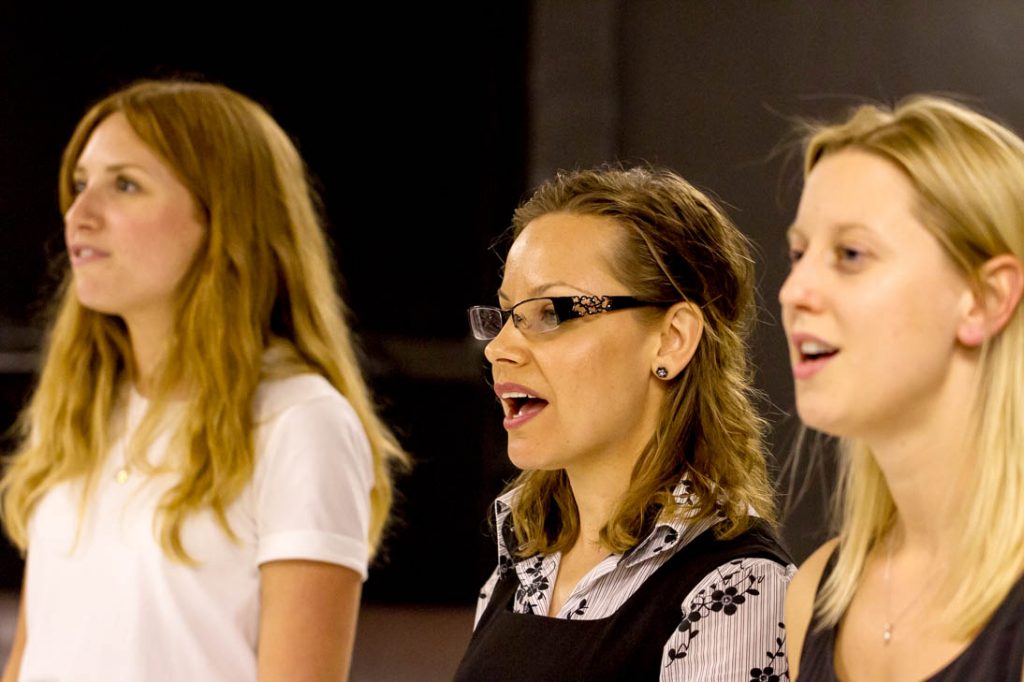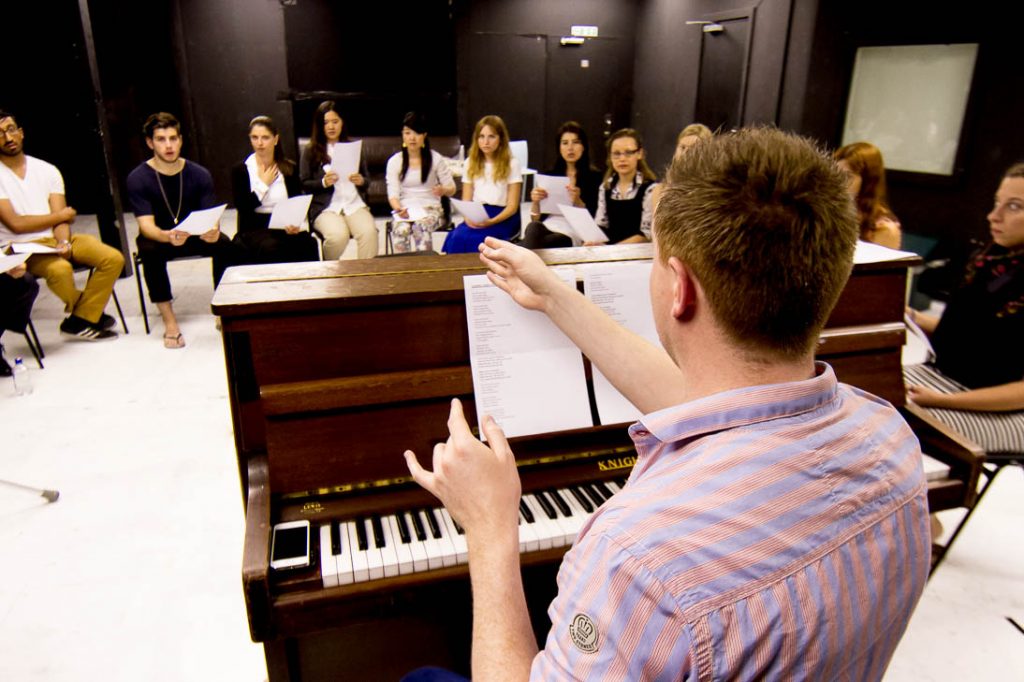Our speaking and singing voice come from the same instrument, and as singing beginners it’s important to remember they’re one voice – both born from the larynx, fuelled by breath and filtered out of the mouth. This might sound obvious but because speech is a habitual, unthought about thing, we rarely consider it a tool.
In fact, the best way to understand your singing voice is to get connected with your speaking voice, because within it lie a lot of clues to the anatomical and physiological nuances of your vocal production. Here are some simple yet useful tips and exercises to get you started:
 Exercise 1: Feel the closure of your vocal cords
Exercise 1: Feel the closure of your vocal cords
Prepare to say any vowel, but then stop just before you make the sound. What do you feel?
The vocal cords have closed and the breath has been stopped.
The meeting of the breath and the vocal cords is what makes the vibrations we call voice. When you close up on vowel sounds, there is a rush of breath against the back of the vocal cords, causing resistance. The first rule of voice production is good contact of the vocal cords.
So this closure is a great way to build vocal tone, because greater resistance results in stronger vibrations. In the long term, when you do let your breath resonate, your sound waves will achieve better pitch.
 Exercise 2: Vowel and pitch variations
Exercise 2: Vowel and pitch variations
Repeat short vowel sounds (“eh eh”).
Then try speaking (not singing) one short sound and elongating the second sound –
“Eh eeeeeehhhh”
Rising and falling with the pitch of your spoken voice.
This exercise is a great way into singing if you’ve never tried it before, because it is a way of recognising the range and the richer sounds of your speaking voice, so that you can utilise them when you sing.
 Exercise 3: The robot voice
Exercise 3: The robot voice
Droning your words so that you sustain the vibrations of your voice is a good place to start when moving from speaking to singing. It helps to get out of the habit of breaking up sentences like you do in normal speech. Try saying this sentence, dragging all the words:
“I like my shoes”
Now try dragging all the words in a higher spoken voice, playing around at different pitches.
When you sustain a sound with a buzzing quality, the vocal cords are opening and closing. Pulling apart and snapping together like this disturbs the air and causes variations in the overall rate of vibrations, audible to us as changes in pitch. Everybody has a different speaking pitch, some people have lower and higher speaking voices, just as you do when you sing.
 Exercise 4: Finding your optimum speaking pitch
Exercise 4: Finding your optimum speaking pitch
Your optimum speaking pitch isn’t about hitting the lowest or highest notes of your range – it’s where your speaking voice sits comfortably. Listen for when it really resonates and has easy carrying power, and where tone production is smoothest:
Count to three out loud. Remember only to speak, not to sing. Repeat till you are basically chanting.
Now count again and hold that end note – “One, two, threeeeeee”
Compare your held note against the notes of a piano to see what pitch it is. Think about the way your throat, mouth and nose contort to allow you to make different shapes and work at this pitch, and try to apply the same physical technique while singing.

 Phillip Shades and Andrea Kempson lent their knowledge to this piece.
Phillip Shades and Andrea Kempson lent their knowledge to this piece.
They are both passionate about developing and encouraging the singing voice, taking the time to run friendly and relaxed courses with City Academy throughout the year, with a strong emphasis on technicality and vocal safety.
To learn how to sing safely, check out our Singing Lessons for Beginners. We have a range of courses available for adults of all abilities.





 Exercise 1: Feel the closure of your vocal cords
Exercise 1: Feel the closure of your vocal cords Exercise 2: Vowel and pitch variations
Exercise 2: Vowel and pitch variations Exercise 3: The robot voice
Exercise 3: The robot voice Exercise 4: Finding your optimum speaking pitch
Exercise 4: Finding your optimum speaking pitch


